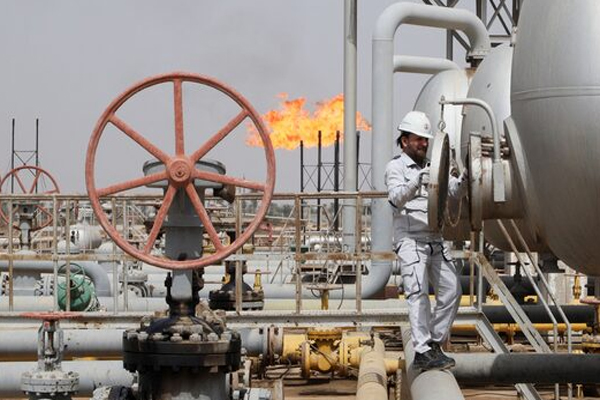
Myra P. Saefong and William Watts , MarketWatch
SAN FRANCISCO/NEW YORK
EnergiesNet.com 06 07 2024
Oil futures declined on Friday to post losses for a third week in a row as traders looked to the latest monthly U.S. jobs data for hints on the outlook of the economy, the future of the Federal Reserve’s interest-rate decisions and the impact on energy demand.
Saudi Arabia’s energy minister, meanwhile, reiterated that an OPEC+ plan to unwind 2.2 million barrels a day in voluntary production cuts later this year could be paused or reversed.
Price moves
- West Texas Intermediate crude CL00, 2.42% for July delivery CL.1, 2.45% CLN24, 2.41% edged down by 2 cents, or less than 0.1%, to settle at $75.53 a barrel on the New York Mercantile Exchange, ending 1.9% lower for the week, FactSet data show.
- August Brent crude BRN00, 2.16% BRNQ24, 2.19%, the global benchmark, was down 25 cents, or 0.3%, to end at $79.62 a barrel on ICE Futures Europe, losing 1.8% for the week.
- July gasoline RBN24, 1.12% fell 0.6% to $2.38 a gallon.
- July heating oil HON24, 2.16% dropped nearly 0.3% to $2.35 a gallon. Both contracts gasoline and heating oil ended about 1.4% lower for the week.
- Natural gas for July delivery NGN24, 4.46% settled at $2.92 per million British thermal units, up 3.4% for the session — contributing to a 12.8% gain for the week.
Market drivers
U.S. and global benchmark crude prices posted their third straight week of losses.
Friday’s report from the Bureau of Labor Statistics offered a “mixed picture with a bullish headline in the form of 272,000 new jobs added in May, well above consensus market expectations,” Robbie Fraser, manager for global research and analytics at Schneider Electric, said in a daily note.
However, that support was “partially challenged by a rise in unemployment, which reached 4% for the first time since 2022 in an early sign that more Americans may be looking to enter or return to the workforce,” Fraser said.
Also see: Weak fuel demand worries markets — but it’s good news for drivers
Given the “somewhat conflicting data points, the report wouldn’t appear to significantly alter Federal Reserve plans to eventually begin cutting interest rates,” he said. Still, “speculative traders initially worked to discount the odds of the Fed announcing their first cut at or before September’s meeting.”
All else being equal, Fraser said, “lower rates are nominally bullish for equity and commodity prices, suggesting that if rate cut timetables continue to be pushed back, it could weigh on crude prices ahead.”
Oil prices had tumbled to four-month lows earlier in the week after the Organization of the Petroleum Exporting Countries and its allies, known as OPEC+, agreed Sunday to keep overall production curbs in place through the end of 2025 while beginning to unwind another layer of voluntary cuts of 2.2 million barrels a day over 12 months beginning in October.
“The lack of certainty about future production targets, as soon as this fall, by major producers like Saudi Arabia and Russia prompted a ‘sell-now-ask-questions-later’ reaction” earlier this week, Tyler Richey, co-editor at Sevens Report Research, told MarketWatch.
Read: Why U.S. oil production isn’t a huge threat to OPEC+ market share anymoreCrude Oil WTI (NYM $/bbl) Front MonthSource: FactSetApril 2024June72.575.077.580.082.585.087.5$90.0
Meanwhile, on Friday, the U.S. Energy Department announced plans to buy another 6 million barrels of oil to replenish the nation’s Strategic Petroleum Reserve. The agency said it continues to aim to buy the oil at $79 per barrel or less, which would be significantly lower than average of $95 it received for the 2022 emergency SPR sales.
The repurchase of oil should help give the oil market support and “allow us to be patient to see what’s going to drive” the market next week, said Phil Flynn, senior market analyst at the Price Futures Group.
Saudi, Russian ministers comment
In remarks at a Russian economic forum in St. Petersburg, Saudi Energy Minister Prince Abdulaziz bin Salman reiterated that the voluntary reduction can be paused or reversed, much in the same fashion that producers have adjusted production measures in the past.
“It’s a year and a half agreement, it has all the mechanics, some of the mechanics are not new, we have also exercised it before,” he said, according to Reuters. “Especially this issue of pausing or reversing.”
Russian Deputy Prime Minister Alexander Novak, speaking at the same event, blamed oil’s recent pullback on speculative factors and reiterated OPEC+’s ability to pause or reverse production increases, the report said.
“The Saudi Arabian energy minister and the Russian deputy prime minister have subsequently explicitly emphasized this possibility, presumably in order to support oil prices,” Carsten Fritsch, commodity analyst at Commerzbank, said in a note. “Furthermore, the market is likely to remain undersupplied in the second half of the year even if the voluntary production cuts are gradually reversed, which is why we also expect prices to rise in the medium term, albeit from a slightly lower level. “
Fritsch said Commerzbank expects Brent crude at $90 a barrel by the end of 2024 and next year, versus its previous forecast of $95 a barrel.
Also see: Oil is ‘best hedge’ against geopolitical risk ahead of U.S. election, BofA says
marketwatch.com 06 07 2024












